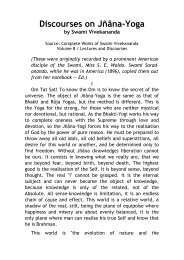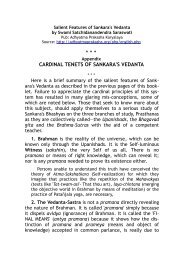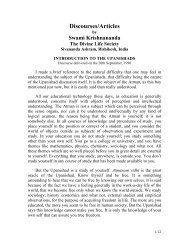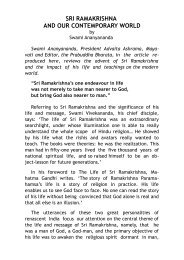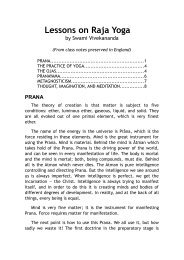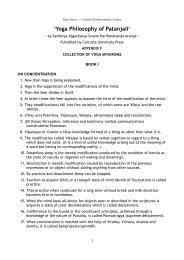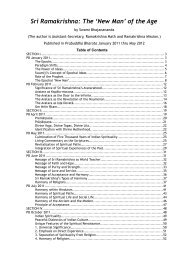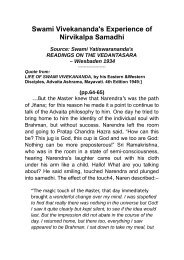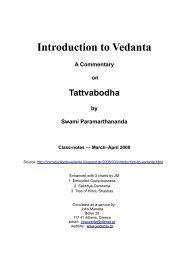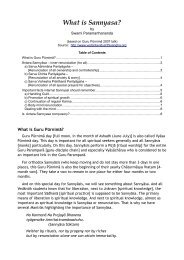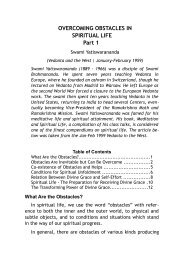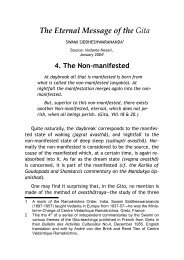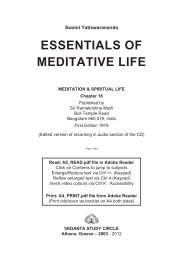Concentration & Meditation - Vedanta
Concentration & Meditation - Vedanta
Concentration & Meditation - Vedanta
Create successful ePaper yourself
Turn your PDF publications into a flip-book with our unique Google optimized e-Paper software.
44 Swami Bhajananandaekagrata parinama. 33 Though this happens in the advancedstages of dhyana, it is the chief characteristic of samprajnata samadhi.Between the fall of one pratyaya and the rise of another, thereis a small gap. Between two thoughts the mind remains closedfor a split second. In normal thinking this is usually not noticed.But in the advanced stages of samadhi when all vrittis disappearexcept that of “I”, this gap becomes noticeable. Then the yogi experiencespure self-existence as a broken series: “I, I, I,” 34 The intervalbetween two “I”-vrittis can now be prolonged. When this isdone, a long time may elapse before the next vritti rises duringwhich period the mind remains in a closed state. This isasamprajnata samadhi.There are, however, samskaras in the depths of the mindwhich go on changing even when all the vrittis are stopped. Thissubliminal transformation is called nirodha parinama. 35 In it thesamskaras of suppression (nirodha samskara) are struggling withsamskaras of emergence (vyutthana samskara). As long as theformer gain the upper hand, the mind remains in a closed state,but when the latter gain the upper hand, samadhi breaks and theperson comes down to outer consciousness.A right understanding of these three mental transformationsprovides the key to a right understanding of Patanjali’s Yoga. Itwill also be of great help to sincere aspirants who are seriouslypractising meditation with the hope of getting some spiritual experience.<strong>Meditation</strong> to become a vehicle of transcendence mustbe practised with yogic attitude and knowledge.PART FIVEPrana and SamskaraKnowledge originates in two ways. One is direct perception inwhich the senses receive energy from the external world. Theother is memory, which is the result of the sprouting of samskarasor latent impressions of past experience lying buried in the mind.Just as a tape-recorder when played back reproduces the origi-33. Yoga Sutras 3. 12.34. See Swami Vivekananda’s poem “A Hymn of Samadhi” in the CompleteWorks (1978), vol. 4, p. 498.35. Yoga Sutras 3. 9.



